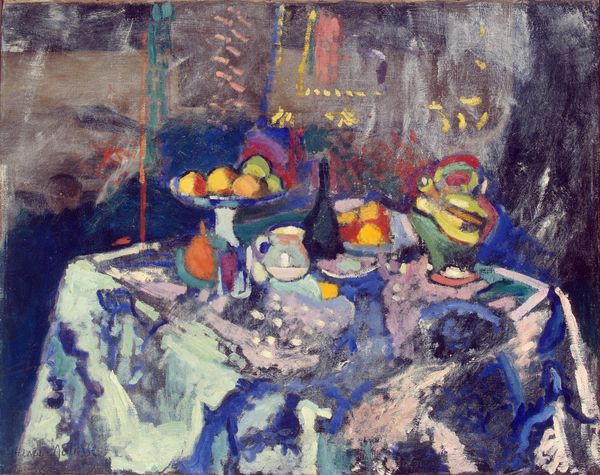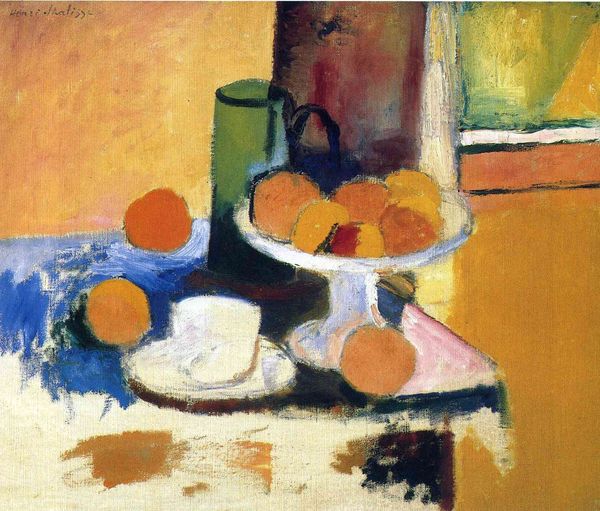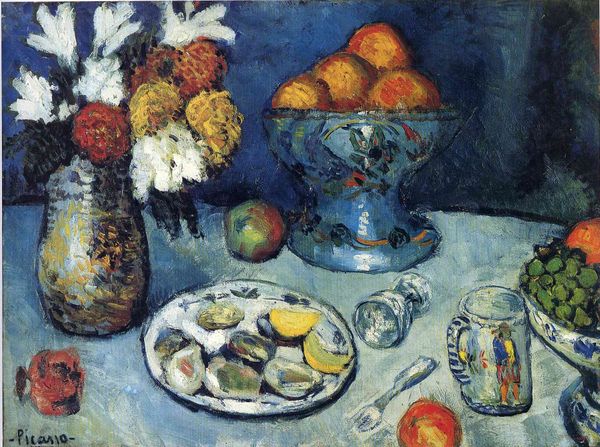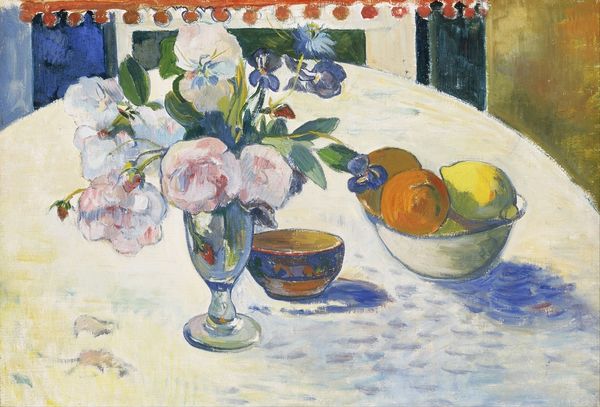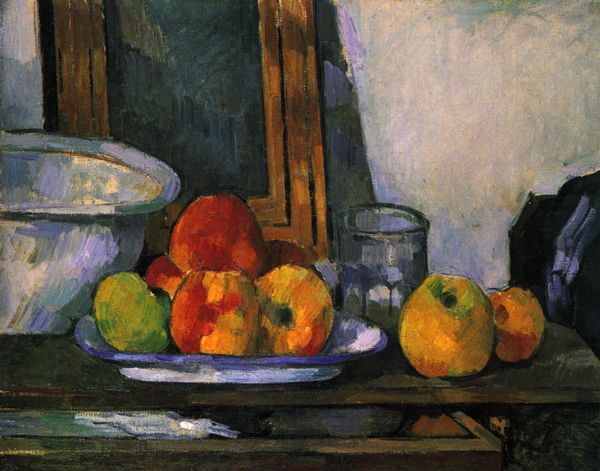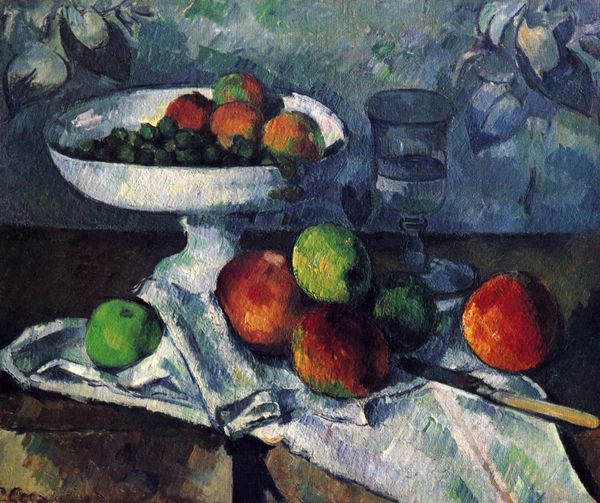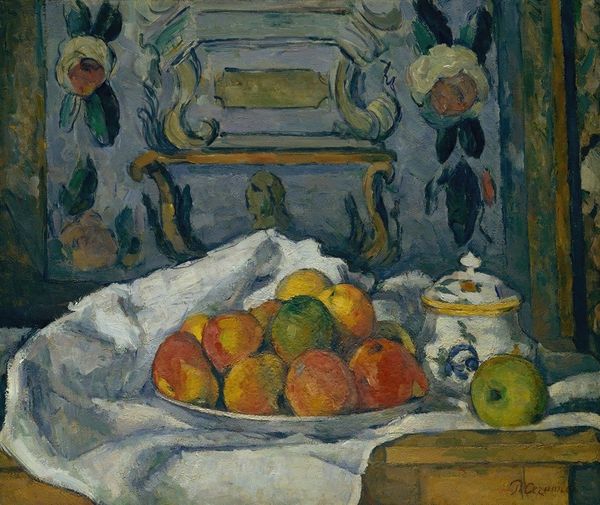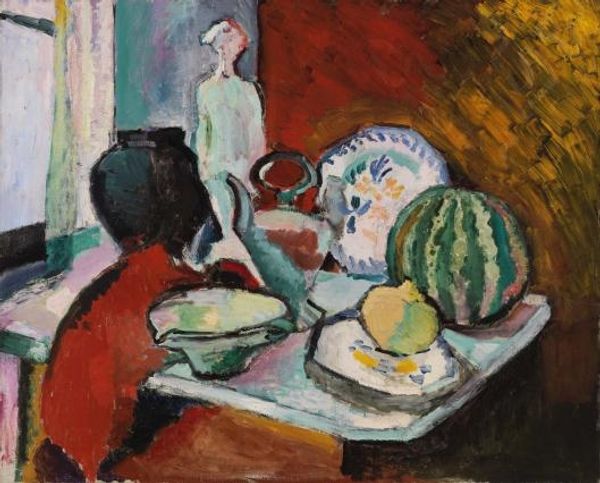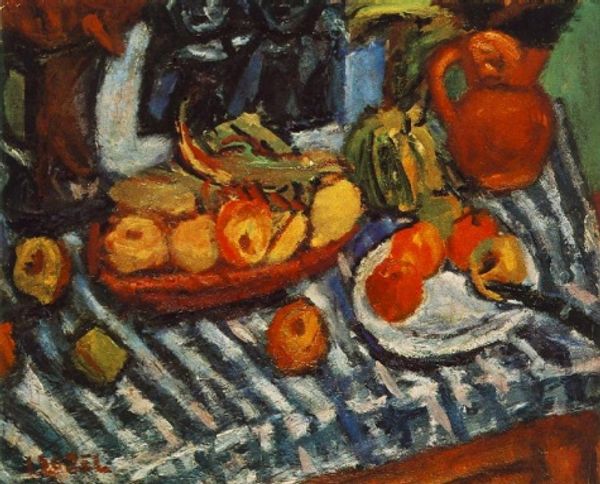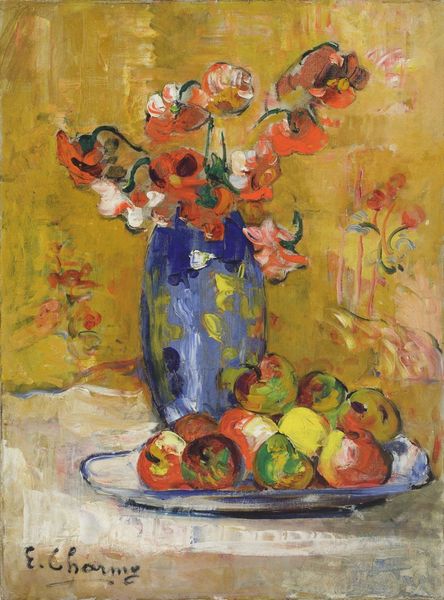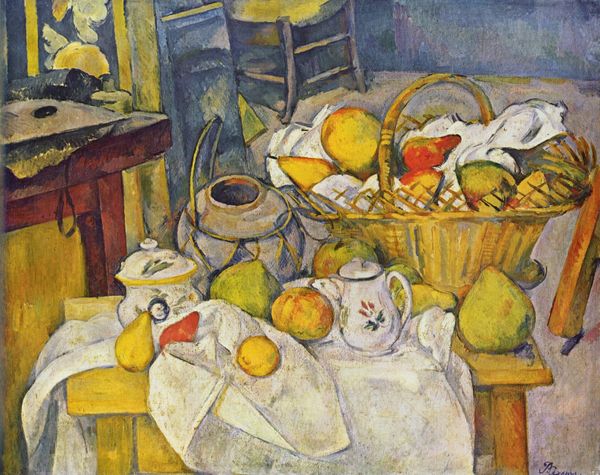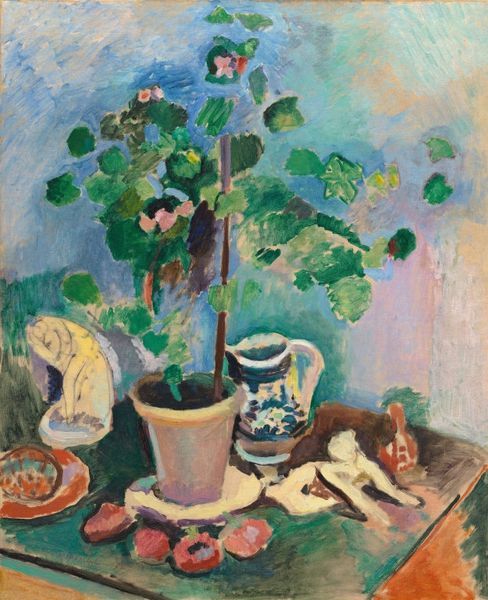
oil-paint
#
fauvism
#
fauvism
#
oil-paint
#
geometric
Copyright: Modern Artists: Artvee
Curator: Welcome. We’re looking at Henri Matisse’s "Blue Still Life," an oil painting completed in 1907. Its vivid palette exemplifies his involvement with the Fauvist movement. Editor: Well, "Blue" is an understatement! My eyes are doing a tango just trying to take it all in. It's almost too much… too alive to be still. Curator: The composition employs a flattened perspective. Note how the objects on the table—the fruit, the vase—seem to exist on nearly the same plane as the patterned tablecloth, denying any deep recession into space. Editor: Exactly. It’s like he squashed it all together, pushing everything forward. It's kind of exhilarating, like a burst of chaotic energy—though, admittedly, I'm having trouble figuring out where things are. The objects seem to vibrate with a fierce, almost joyous… defiance of realism? Curator: Indeed. Notice Matisse's deliberate use of complementary colors. The blues and oranges create a dynamic tension. Also the brushstrokes are visible, which are independent of any attempt to represent the physical characteristics of the items portrayed. Editor: I feel a deep pulse when viewing this artwork. A part of me craves that harmonic balance or clarity, that is completely overridden. But instead Matisse paints exactly what I feel on days I'm full of frenetic activity. Curator: Interesting point. There are geometric forms throughout the composition which adds balance to the piece, perhaps taming down some of the "frenetic activity" as you mentioned. The urn in the back with its repeated lines is reminiscent of a Greek architectural structure. Editor: Perhaps. Though what it seems to be is some large vase taking dominance over the natural world, some symbol for something I can't grasp. It seems out of sync to be there, in general. Maybe there is something deeply intentional with the tension there. I don't know. Maybe that's part of its beauty. Curator: It does leave much open to interpretation. Thank you for those enlightening thoughts. Editor: Always a pleasure to unravel—or maybe tangle with—art.
Comments
No comments
Be the first to comment and join the conversation on the ultimate creative platform.
